Things break all the time in our everyday lives. Instead of repairing, we often immediately buy a replacement. Growing mountains of waste, increasing CO2 emissions and a senseless exploitation of resources are the consequences. The exhibition Repair Revolution! at the Museum für Gestaltung Zurich presents the vision of a repair society until 15 October 2023 and examines the role of design on the way there.
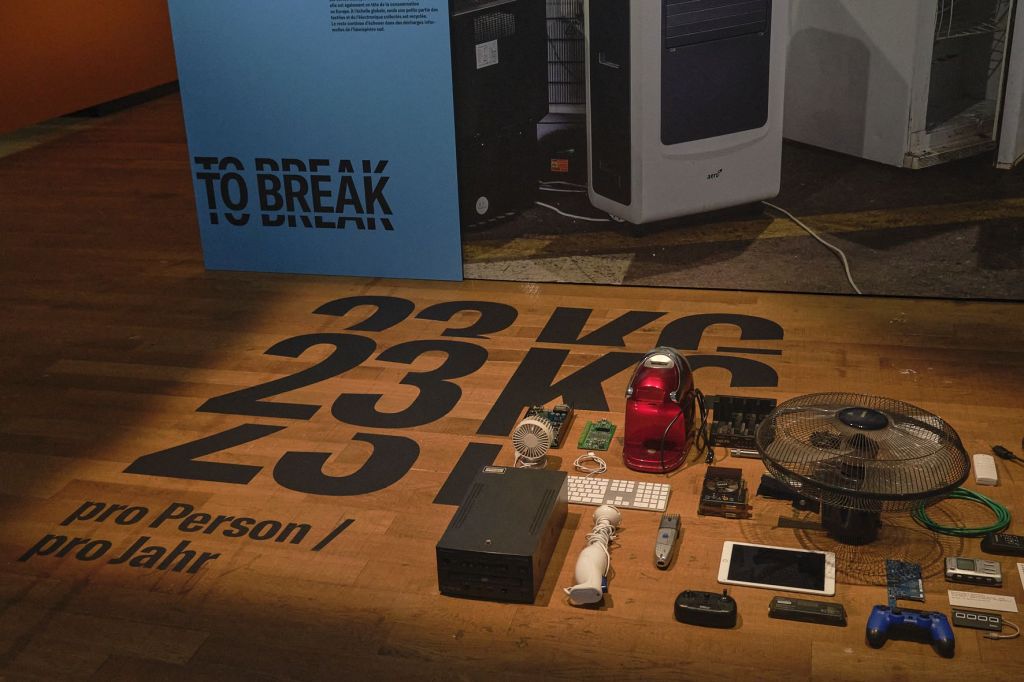
Every Swiss person throws away 13 kilos of clothes and 23 kilos of electronic waste per year. Photo: © Werner Mäder, Uetikon
While repairing things was commonplace and necessary in pre-industrial society as well as in times of crisis, it is often dispensed with in western countries today. Expert repairs are usually far more expensive than new goods. At the same time, they lack the necessary knowledge or the right materials to do it themselves. Against the backdrop of the climate and environmental crisis of the 21st century, however, repairs should be increased again. Swiss people dispose of around 15 kilogrammes of clothes every year, and with 23 kilogrammes per person per year, Switzerland is the world’s third-largest producer of electronic waste. The global recycling rate is less than one fifth, and too much ends up in illegal waste dumps in the global South.
The principle of reparability
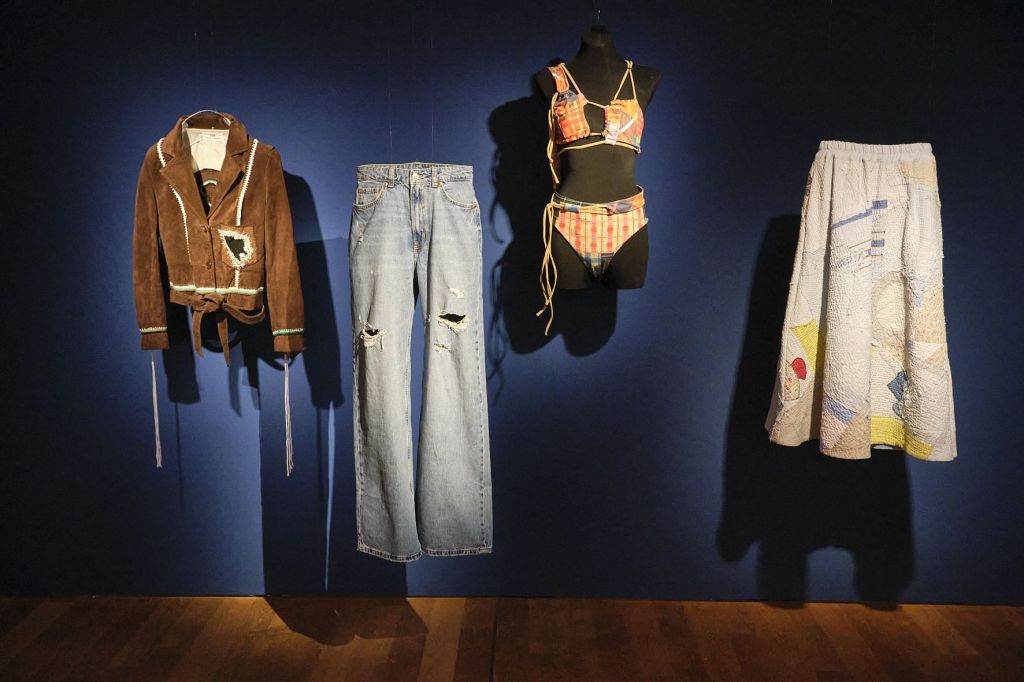
When repairs become a popular aesthetic: Patches as modern accessories; Photo: © Werner Mäder, Uetikon
Whether an object can be repaired is often already decided in the design process. While repair- and maintenance-friendly design is an integral part of design practice in mechanical engineering, it still tends to remain the exception in broad product design. However, there are also developments and projects here that focus on the reparability of products. Modular headphones, a repairable mixer or shoes with replaceable soles bring the design principle of repair into the product world of the present.
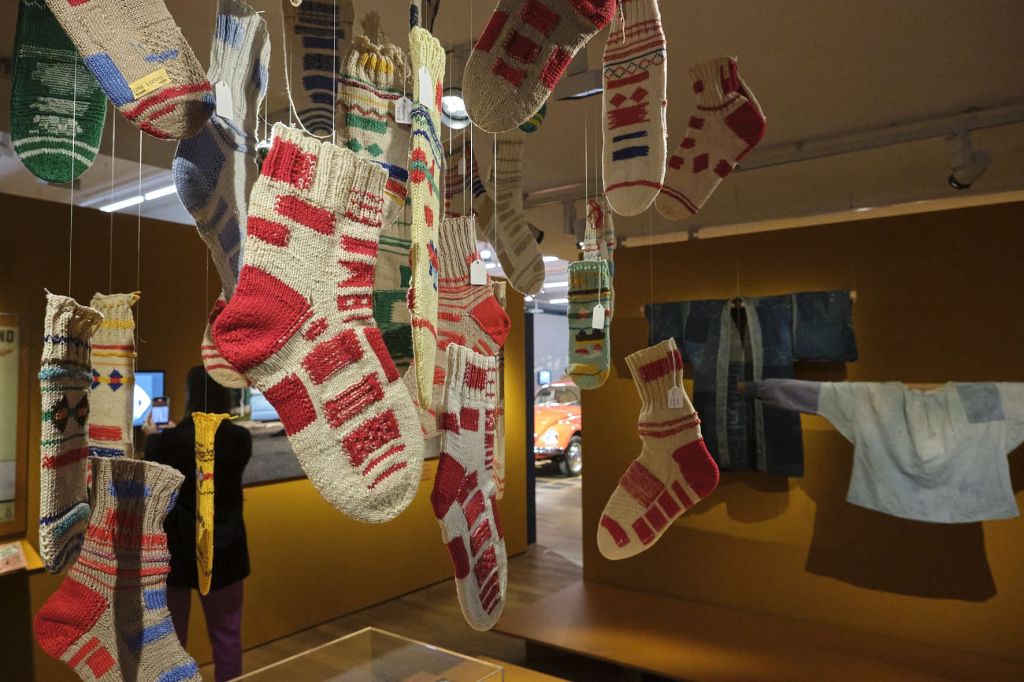
In many cantons, sock darning was taught in schools. Photo: © Werner Mäder, Uetikon
The exhibition shows that repairing offers realisable possibilities in dealing with the challenges of the 21st century. Five thematic areas paint a multi-voiced picture of initiatives and people who deal with the topic. “Made to Break?” vividly illustrates the problem of waste; in “Pièces de Résistance”, the beauty of repaired objects from the most diverse times and cultures becomes an inspiration for today. The “Radically Repairable” section shows that reparability is a design task. “Repair material total” spans an arc from material innovations to familiar mending tools. “Repair-it-together” shows initiatives and collectives that understand repairing as a communal practice.
Aesthetic, cultural and social practice
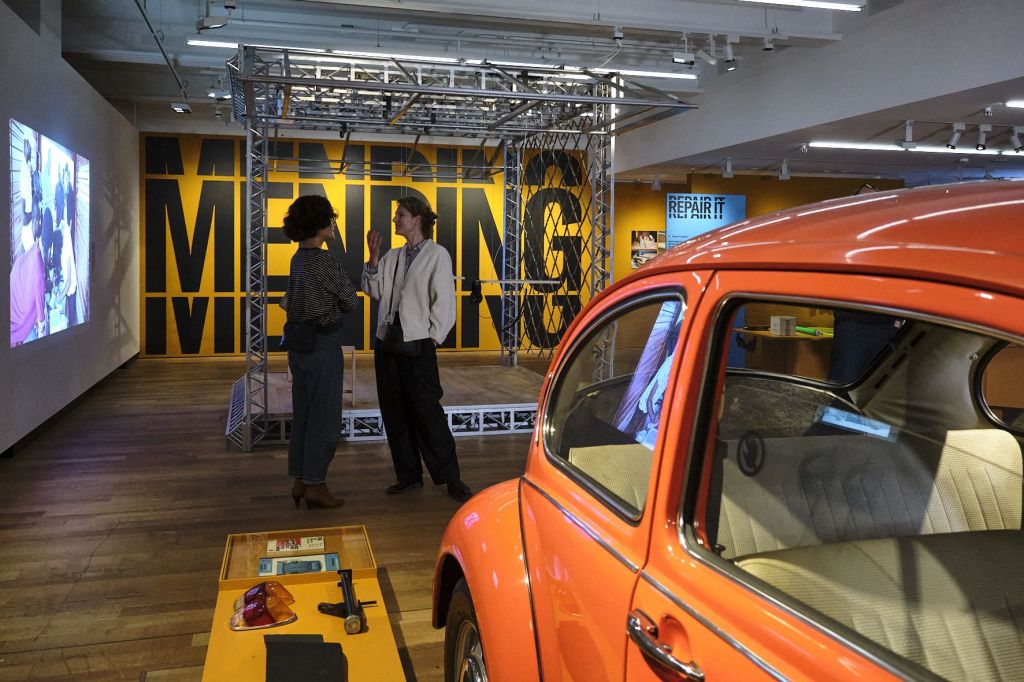
This Volkswagen was once built for optimal repairability. Photo: © Werner Mäder, Uetikon
In Western society, new goods are considered the highest good. The exhibition invites us to rethink this: Thanks to malleable adhesives such as Sugru and Formcard, or breakages gilded with Kintsugi, repaired damage becomes an eye-catcher. An elaborately maintained kimono, repaired country chairs, mended socks from Appenzell or newly glazed ceramic shards on which a Zurich star restaurant serves bread are further examples of a different concept of aesthetics.
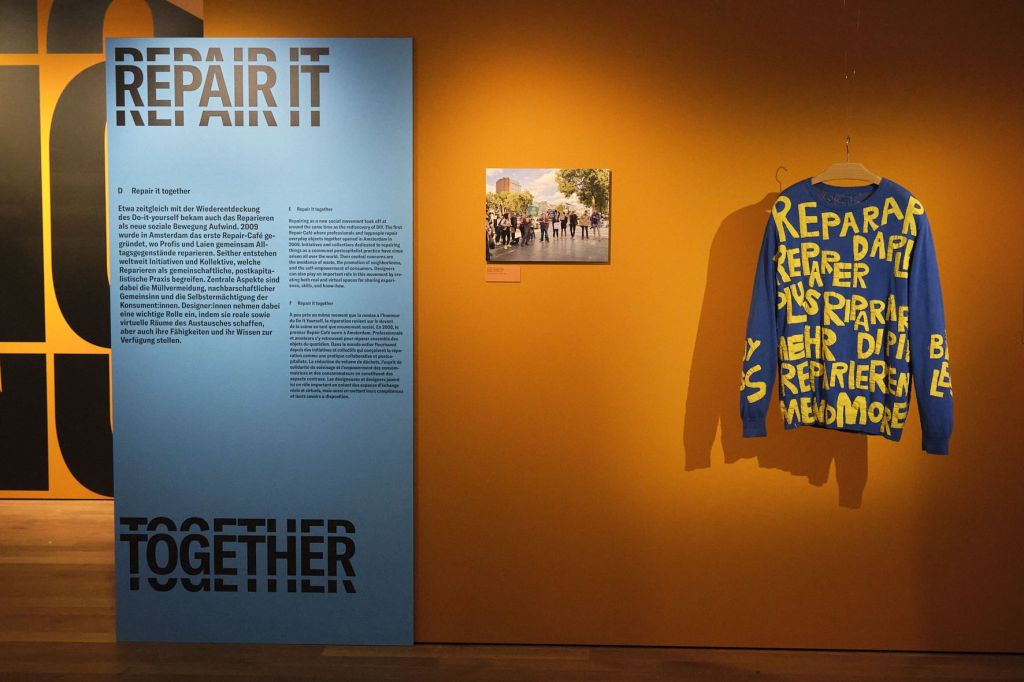
Repair it together. The first Repair Café was founded in Amsterdam in 2009; Photo: © Werner Mäder, Uetikon
As a cultural and social practice, the topic offers great potential for innovation even beyond classic product design. The Swiss start-up rrreefs, for example, is developing modular artificial coral reef systems in the form of 3D-printed clay bricks on whose surface structures corals can grow. Or the pan-African participatory project “Agbogbloshie Maker Space Platform Spacecraft” (AMP) brings together makers from the world’s largest e-waste dump in Ghana with young experts from science.
Opening hours
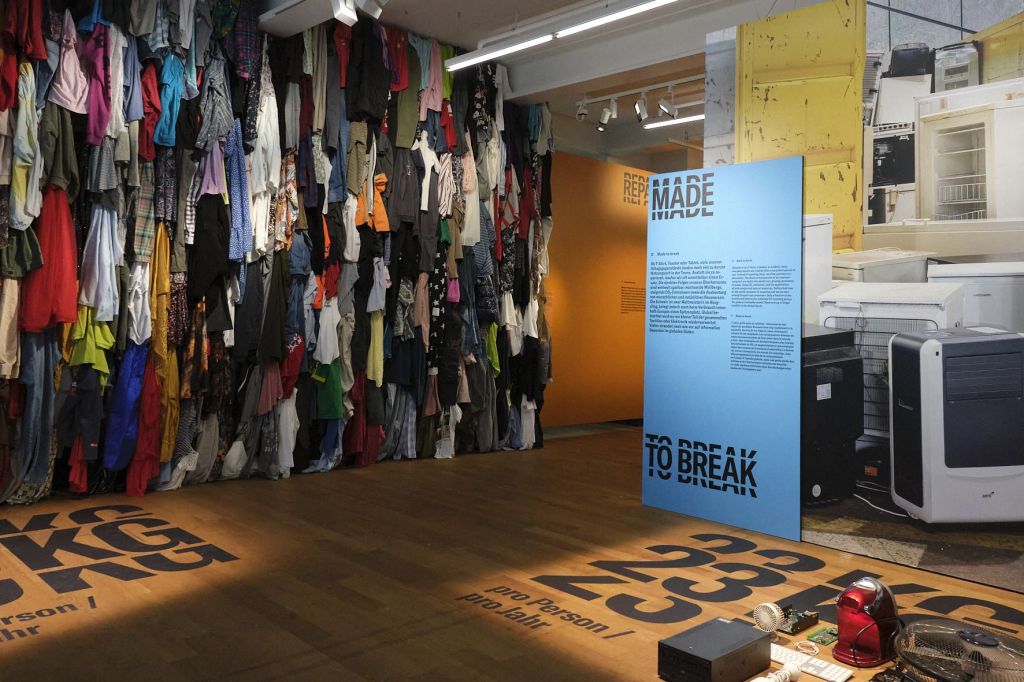
The fast-moving fashion and the far too low prices for clothes contribute significantly to increasing mountains of waste. Repairs are not an option. Photo: © Werner Mäder, Uetikon
The exhibition runs from 31 March to 15 October 2023 and is open Tuesday-Sunday from 10am-5pm and on Thursday until 8pm.
For more information on visiting the exhibition and opening hours on public holidays, click here.


